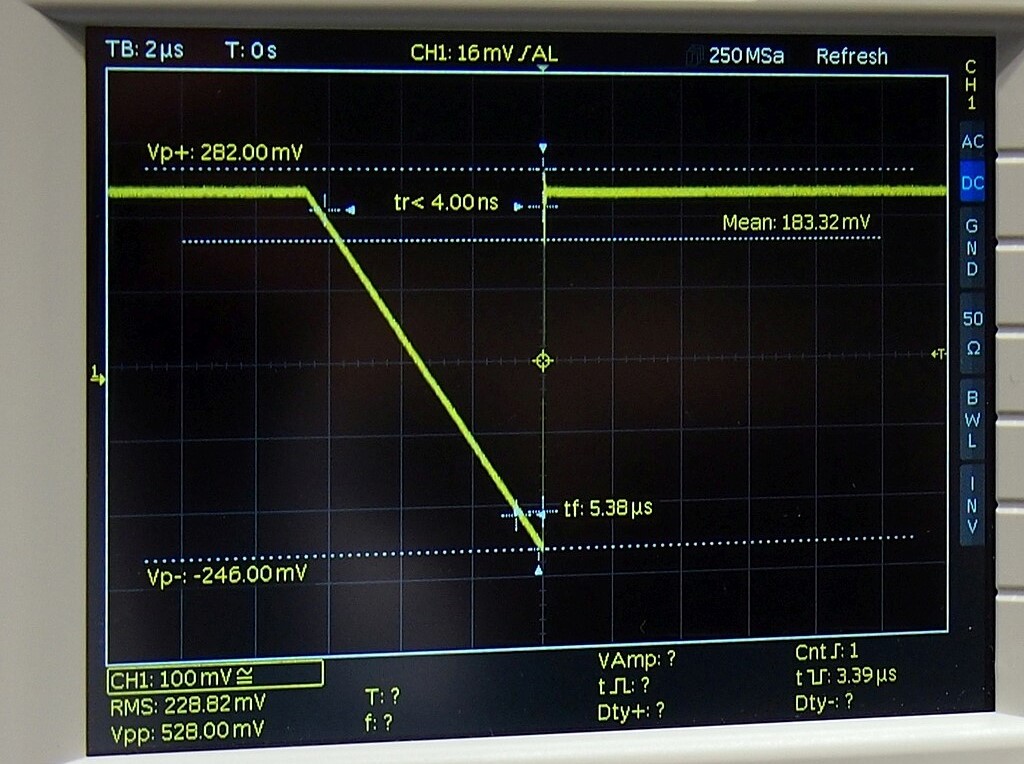The oscilloscope and the signal generator both play crucial roles in the realm of electronics. An oscilloscope allows the user to dissect electrical signals, offering a window into their inner workings. On the other hand, a signal generator crafts these very signals with meticulous control. In this post, we will explore the unique strengths, applications, and features of these two devices- unraveling their functions and shedding light on their practical use in various fields.

Oscilloscopes: The Art of Signal Measurement
An oscilloscope is a versatile device that has earned its place in countless laboratories and workshops. Its primary role is to measure and display electrical signals over time. With an oscilloscope, engineers and technicians can examine the amplitude, frequency, and phase of a signal, as well as other critical characteristics such as rise time, fall time, and jitter.
Applications: Oscilloscopes find widespread use in electronics design, troubleshooting, and repair. They are indispensable for observing and analyzing electrical waveforms.
Key Features: Oscilloscopes excel in amplitude, frequency, and phase measurements, and they provide a clear visual representation of the signal’s waveform, including its shape and timing characteristics.
Example Use Case: An engineer might employ an oscilloscope to measure the voltage waveform of a power supply, ensuring that it meets the required specifications.
Keysight Oscilloscopes: Oscilloscopes from Keysight are designed for portability, flexibility, and affordability- and come in a variety of handheld, modular, and USB varieties. Handheld oscilloscopes are ideal for field troubleshooting and maintenance, while modular oscilloscopes offer the flexibility to customize the oscilloscope to meet specific needs. For basic signal analysis, USB oscilloscopes are a convenient and affordable option.
Keysight’s Infiniium series of oscilloscopes, including the DSO8104A, are designed for the most demanding applications- such as high-speed circuit design and validation. They offer high bandwidths, sample rates, and signal integrity performance.
Signal Generators: Crafting Electrical Signals
On the other side of the spectrum is the signal generator, a device designed to generate electrical signals with specific properties. These properties include frequency, amplitude, and waveform. Signal generators are invaluable for testing and troubleshooting electronic circuits, as well as generating signals for various applications.
Applications: Signal generators are commonly used to create test signals for circuit testing and troubleshooting. They also play a vital role in generating signals for communication and other applications.
Key Features: Signal generators excel in frequency, amplitude, and waveform generation, and they often have modulation capabilities for creating more complex signals.
Example Use Case: A technician might utilize a signal generator to create a test signal to inject into a circuit, helping diagnose and resolve problems.
Keysight Signal Generators: Keysight signal generators are used in a wide range of applications, including design, test, and manufacturing of electronic devices and systems. These include RF signal generators, Microwave signal generators (such as the N5173B), arbitrary waveform generators (such as the M8192A), and function generators.

Key Differences In Test and Measurement
Now that we’ve explored the individual characteristics of oscilloscopes and signal generators, let’s summarize the key differences between the two:
Oscilloscopes are primarily focused on measuring and displaying electrical signals, while signal generators are focused on generating electrical signals.
Typical applications of oscilloscopes include electronics design, troubleshooting, and repair, while signal generators are commonly used for testing and troubleshooting electronic circuits and generating signals for communication and other purposes.
Key features of oscilloscopes include amplitude, frequency, and phase measurement, as well as waveform display and the ability to measure parameters like rise time, fall time, and jitter.
Key features of signal generators include the generation of specific frequencies, amplitudes, and waveforms, often with modulation capabilities for more complex signal creation.
Both oscilloscopes and signal generators are indispensable tools for anyone working with electronics. They complement each other by offering distinct capabilities for signal analysis and signal creation, contributing to the advancement of technology and innovation in countless industries. Whether you’re an engineer, technician, or researcher, understanding the differences between these devices is essential for effective test and measurement.